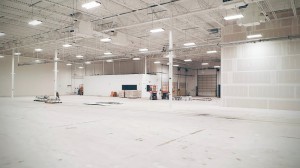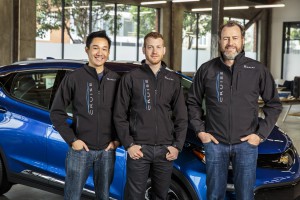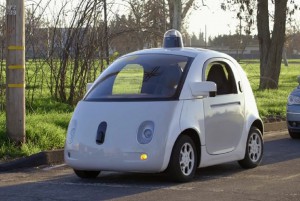
Google is opening a development center in Novi, Michigan. This building will start work with 100 Chrysler Pacific minivans.
As it steadily moves closer to production, Google is planning to open a new autonomous vehicle development center in the Detroit suburb of Novi.
The move will offer several advantages. Among other things, it will allow the tech firm to work more closely with the partners that would put Google’s self-driving technology into production. The announcement comes barely a month after Fiat Chrysler Automobiles and Google announced plans to use the technology on 100 new Chrysler Pacifica minivans.
“For the past few years, members of our team have been working from the Greater Detroit area. Now it’s time to lay down roots: we’re establishing a self-driving technology development center in Novi,” said John Krafcik, the CEO of Google’s Self-Driving Car Project in a post on the Google+ service.
Google is generally considered to have the industry’s most advanced autonomous vehicle research program. But the tech giant has repeatedly said it does not intend to enter into automotive production, and would rather find partners, such as Fiat Chrysler, to license and use the technology on their vehicles.
The agreement with FCA is not exclusive, and both companies have made it clear they would consider working with other partners, as well. Indeed, it has been rumored for months that Google is discussing an alliance with Ford Motor Co., too. Neither company will comment, though an expected announcement last January at the annual Consumer Electronics Show failed to materialize.
(Most Americans wary of self-driving cars. For more, Click Here.)
By locating in the Detroit suburbs, Google would also be close to some of the component suppliers for its autonomous vehicle system. And there are numerous government offices in the region.
“Many of our current partners are based here, so having a local facility will help us collaborate more easily and access Michigan’s top talent in vehicle development and engineering. At this 53,000-square-foot development center, our engineers, working with local partners, will further develop and refine self-driving technology. One of the first tasks will be to ready our self-driving Pacifica hybrid minivans.”
Yet another potential advantage could be the ability to test vehicles in the sort of inclement weather Michigan is known for. Until recently, Google’s fleet of autonomous prototypes was limited to operating near the company’s corporate headquarters in Silicon Valley and a second location near its Austin, Texas, tech center. It has added two more sites, most recently Phoenix.
(Uber launching its own autonomous vehicle program. Click Here to see what it’s up to.)
But Krafcik told TheDetroitBureau.com earlier this year that cold weather testing was essential if Google eventually hopes to develop autonomous vehicles that can operate on their own any time and any place. Currently, such vehicles have trouble operating on snow and ice, in part, because lane markers and other visual guides may be obstructed.

The race to bring the first fully autonomous vehicle to market is heating up. GM spent $1 billion to acquire Cruise Automation as part of their effort.
While about 100 Chrysler Pacifica prototypes will be put on the road in the near future, Google has yet to lay out a firm timeline for putting its first autonomous vehicles into the retail market.
But there are competitors aiming for the relatively near-term. That includes Tesla which launched its semi-autonomous AutoPilot system on the Models S and X late last year. Meanwhile, Nissan has said it could have as many as 10 autonomous models in production by 2020.
(Fiat Chrysler open to more autonomous partners than just Google, says CEO Marchionne. Click Here for more.)
The race to bring self-driving vehicles to market has created a flurry of deal-making, everything from partnerships to outright acquisitions. Toyota has pledged $1 billion in the next tech arm developing its autonomous system and General Motors this month completed the $1 billion takeover of Cruise Technologies, a San Francisco-based start-up focusing on self-driving software.

